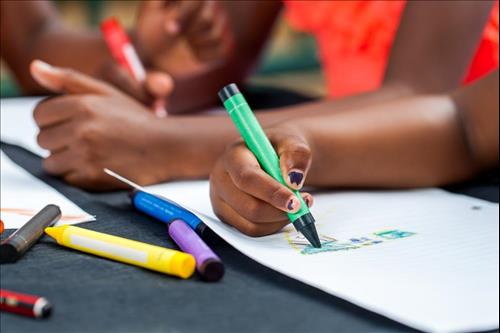
Kenyan approach holds promise for boosting early childhood education
Research has shown that participating in early childhood development and education programmes is associated with better adjustment to later schooling, as well as higher levels of academic achievement.
Kenya is among the best regional performers in terms of early childhood development enrolment, as shown in the chart below. But enrolment doesn't necessarily equate with quality.
UNESCO 2017So in 2014, the Kenyan government introduced an early childhood education programme called Tayari – a Kiswahili word that means 'readiness'. It was piloted over four years in more than 1800 public and private early childhood development and education centres. Tayari reached slightly over 72 000 pre-primary school leaners.
Tayari's aim was to develop a cost-effective, scalable model of early childhood development and education that would prepare children cognitively, physically, socially and emotionally for primary school. The model had three interrelated components. The first was teacher training and classroom support. The second involved providing teachers and learners with appropriate instructional materials like learners' work books and teacher guides. The third centred on health and hygiene knowledge, making children aware of why hand washing and healthy foods are important.
Cost-effectiveness was determined by comparing net gain scores on learner assessment to incremental costs of implementing Tayari. This information is important to policy makers in making alternative investment decisions.
So, did it succeed? My colleagues and I at the African Population and Health Research Centre conducted an independent external evaluation to find out. We wanted to assess the programme's impact, and how cost effective it had been. Our findings were largely positive.
The learners who were exposed to Tayari were more ready to join primary grade 1 compared to those not involved in the programme. The Tayari model provides an opportunity to improve the quality of childhood learning in sub-Saharan Africa. It is flexible and can be tweaked to fit different contexts.
Measuring successOur study involved a randomised control trial design. This means we created a natural experiment to compare scores of learners who were exposed to Tayari with those of similar learners not exposed. Using this approach, we sampled 600 pre-primary schools from the 1800 centres involved in the Tayari programme. Half of these were low-cost private early childhood development and education centres; the other half were public early childhood development and education centres.
We then compared learner assessment results from the centres that were exposed to learners of centres not exposed. We found that, on average, learners who'd been part of the Tayari programme were about three school months ahead of their peers who hadn't taken part.
Crucially, we also found that the Tayari programme was cost-effective. By spending an extra US $14 per learner over a period of two years – that is, about US $7 a year – policymakers could enhance learners' scores in early childhood development and education centres by an average of about 3 percentage points.
With a budget of US $7 million per year, the government can heavily subsidise the cost of 1 million learners in early childhood education in a way that will improve the quality and make the learners ready to join primary grade 1.
Future prospectsOur results suggest that the Tayari programme could provide a useful model for other countries in sub-Sahara Africa. The typical barriers addressed by Tayari includes inadequate provision of age-appropriate and context relevant quality teaching and learning materials; and, lack of capacity to offer classroom-based teacher coaching during instruction.
Policymakers have much to learn from the way the model was structured, and the way the overall package focused on instructional quality.
Of course, there are still gaps in our knowledge. We don't know how long Tayari's social and education benefits will persist; this will need to be the focus of future research. But, based on our study and its findings, we believe the Tayari model is suitable for scaling up by ministries of education and development partners.
- Kenya Early childhood Early learning Kiswahili Early childhood development

Legal Disclaimer:
MENAFN provides the
information “as is” without warranty of any kind. We do not accept
any responsibility or liability for the accuracy, content, images,
videos, licenses, completeness, legality, or reliability of the information
contained in this article. If you have any complaints or copyright
issues related to this article, kindly contact the provider above.


















Comments
No comment